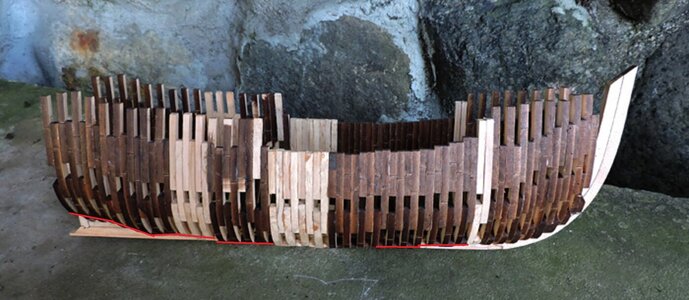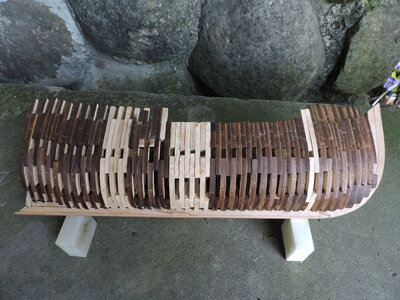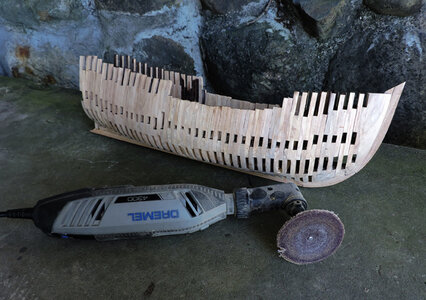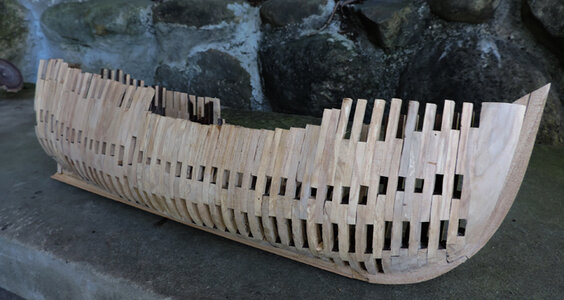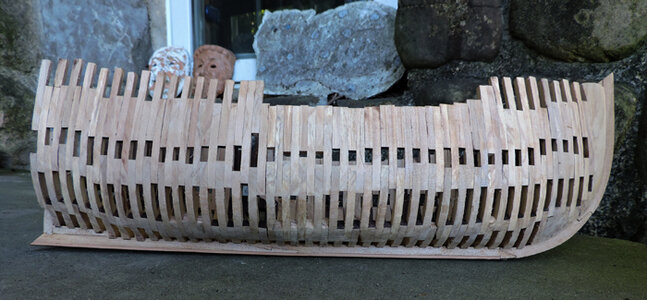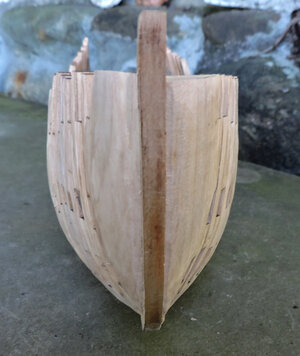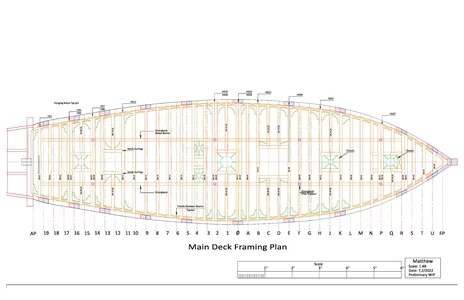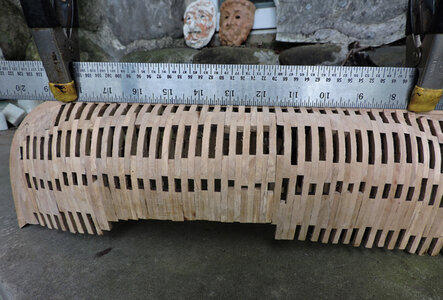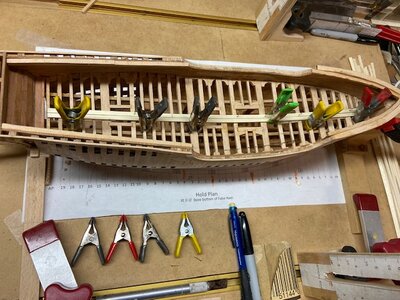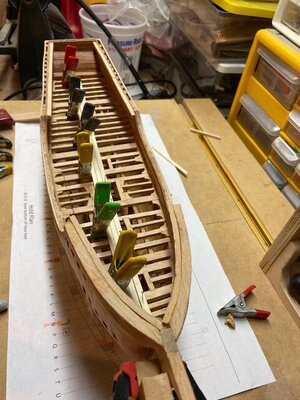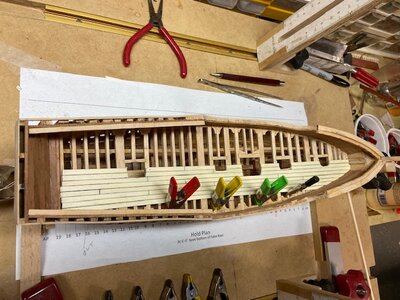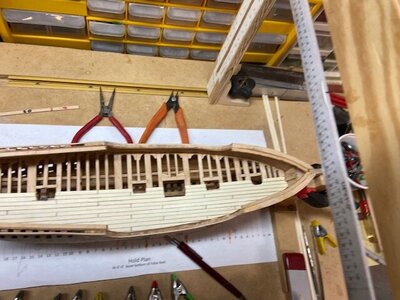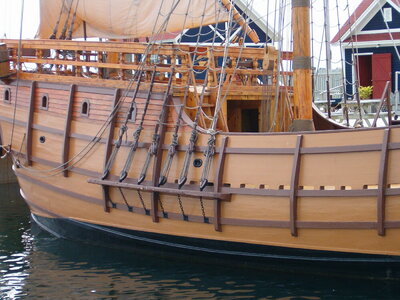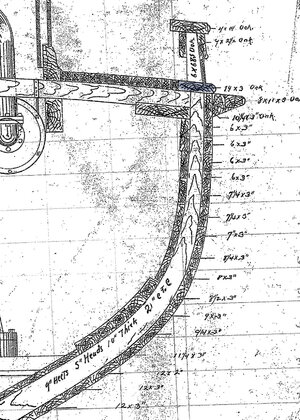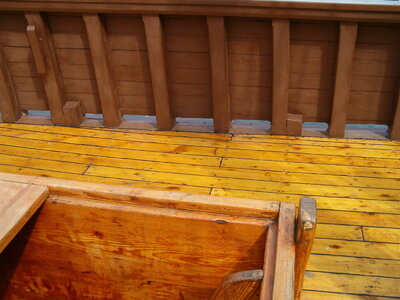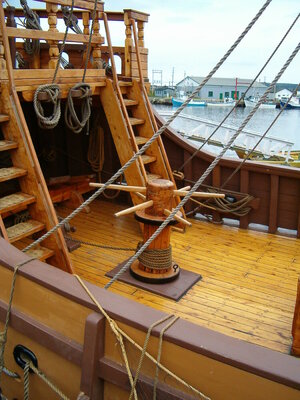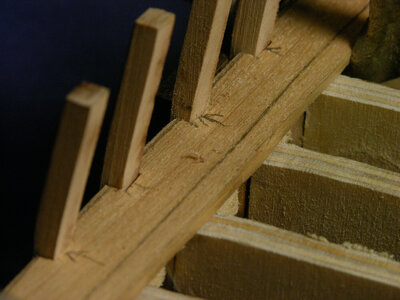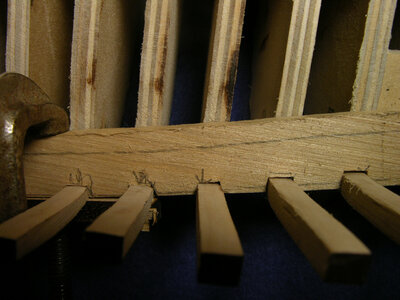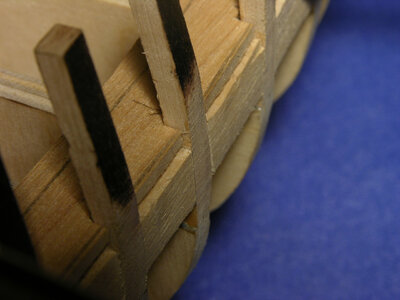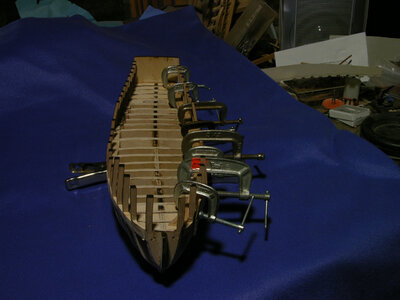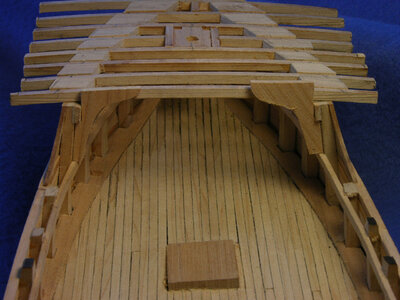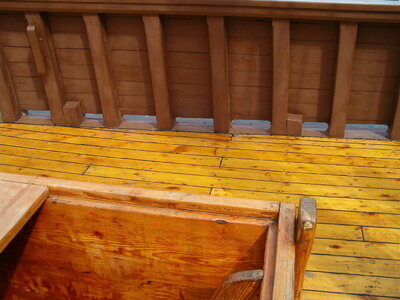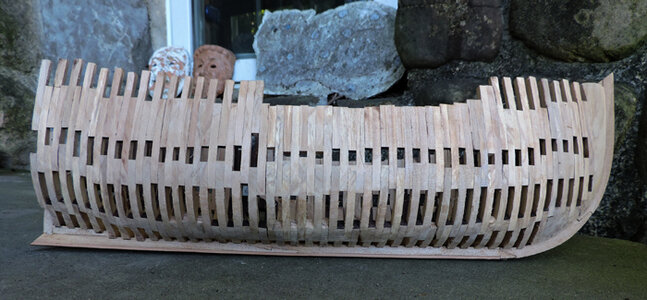Congrats also to you reaching this working step in the construction.Mikes work is really nice personally i like the open look of the timbering.
i finished all the frames and now have a hull
View attachment 322825
View attachment 322826
this build is about the building process of the hull. By building the hull i will say Mikes drawings are perfect with the laser cut parts from those drawings made a perfect shaped hull. See those bands of solid wood where the frames overlap. if your careful you can get a nice curve from the profile view.
View attachment 322827
to get a good shape to the hull you have to pay attention to the drawings which i did not. The frame pieces with the yellow dot are in the wrong spot, they should have been shifted out
now i have to rip out 6 frames rebuild them and replace the ones i messed up.
View attachment 322828
i lined the edges up i think the plan shows the timbers shifted. if i shift the yellow dot frames half way to the frame behind it i will get better results.
View attachment 322831
I hope, that you have enough meat on the individual frames, beacuse we can recognize some steps (red lines along the keel) which are due to the not-use of a jig for the complete framing - I guess this could be the biggest cons for the chosen construction method
